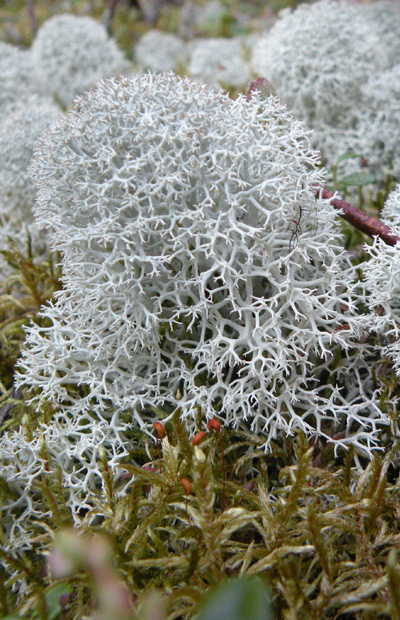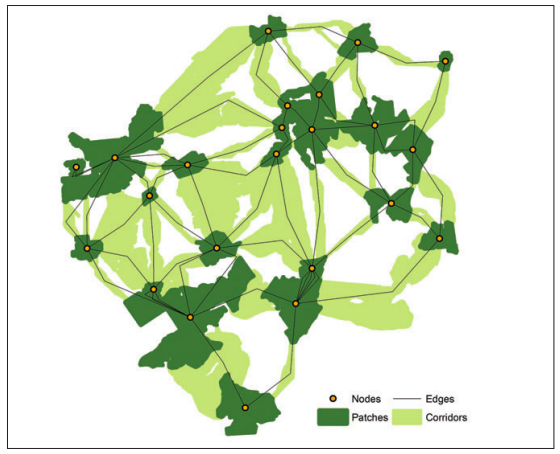Caribou and Connectivity

By Nicole Doll
Landscape connectivity in ecology can be defined as “the degree to which the landscape facilitates or impedes movement among resource patches” (Taylor et al. 1993). It signifies how animals can migrate safely to different regions amid disturbance and fragmentation.

Woodland caribou are a species that require large areas of connected old-growth forest, with little to no disturbances in order to carry out their life processes needed for survival and reproduction. Because of this requirement, researchers and Indigenous communities have long been aware of the need to protect Woodland caribou species and their habitat, as populations across the boreal have been heavily affected by changes to the landscape. When it comes to habitat protection, landscape connectivity is key for the boreal Woodland Caribou.
Unlike other ungulate species such as moose or deer who prefer edge habitats that contain younger and regenerated vegetation, Woodland caribou need to be deep into the old-growth forest. Here, they can remain protected from their primary predator, the wolf, as well as find their main food source, lichen, which is harbored on mature trees and forest floors.



Landscape connectivity has been increasingly difficult to find in the boreal forest since anthropogenic disturbances have broken up the forest with roads, trails, cutlines, and cut blocks. Since caribou typically try and avoid such disturbances, their range becomes more restricted, shrinking the size of habitat patches and forcing them to travel through disturbed areas, where the risk of predation is at its highest.
Nation-wide disturbances across the boreal have increased so much in recent years that Woodland caribou now only occupy half of the habitat they once did in the 19th century. The downward trends in caribou population levels correspond with upward trends in encroaching industrialization and range reduction. These trends make it clear that caribou populations are unable to sustain viable population levels if industry continues to utilize core areas of Woodland caribou habitat.
How are Caribou populations affected by smaller habitat patches?
Caribou populations are particularly impacted by predation and competition. Large patches of habitat can act as a safety barrier between caribou and wolves, where bush and fallen trees, intact bogs, and wetlands, make it difficult to locate and chase herds of caribou.
However, disturbances such as roads and cutlines improve sight-lines for predators and allow them to travel faster and more efficiently to caribou. Because habitat patches become smaller, caribou must travel through disturbed areas between patches increasing their vulnerability and the likeliness of being seen. If barriers are too great to cross, small populations of caribou can become genetically isolated, causing a lack of diversity that is needed to sustain long-term survival.
Increased access throughout the forest has also posed a risk to the remote calving grounds that are integral to calf survival. Cows will search for isolated, quiet areas where it is safe to give birth to their calf. These areas are becoming more difficult to find, and when they are compromised, calf survival is impacted. Today, calf survival rate is only 30-50%. Since each cow only gives birth to one calf per year, their survival is essential to the health of the population.
Increased fragmentation means increased edge species.
Both natural and anthropogenic disturbances create conditions for new and regenerated growth. Since Woodland caribou rely on the products of old-growth forest for their diet, fresh vegetation is unsuitable habitat.



While new growth does not suit fit to caribou’s needs, it attracts ungulate competitors such as deer, elk, and moose. These competitors further attract the attention of surrounding wolves, and transport diseases that can be transmitted to caribou such as chronic wasting disease and meningeal worms.
To sustain long-term healthy caribou populations, the land needs to be managed in a way that protects core habitat areas, while at the same time ensuring connectivity between these areas to allow for safe travel. This will require cooperation between governments, industry, Indigenous communities, and environmental organizations, but will be needed to ensure the long-term survival of caribou across the boreal.
Taylor, P.D., Fahrig, Henein, K., Gray, M. (1993). Connectivity Is a Vital Element of Landscape Structure” (PDF). Oikos. JSTOR. 68 (3): 571. doi:10.2307/3544927.
